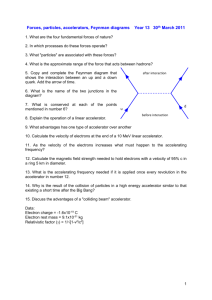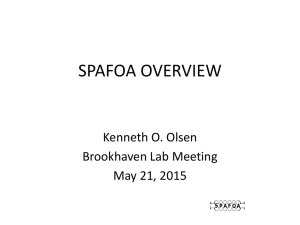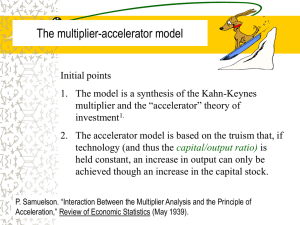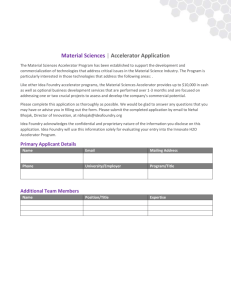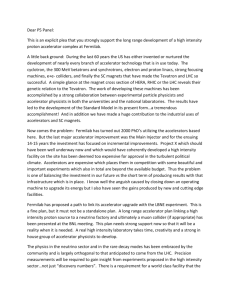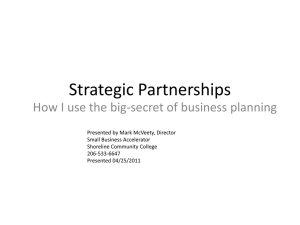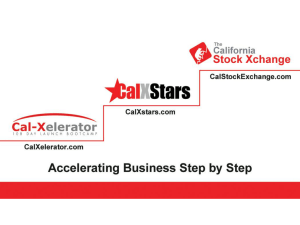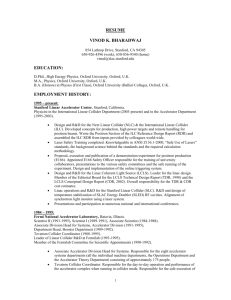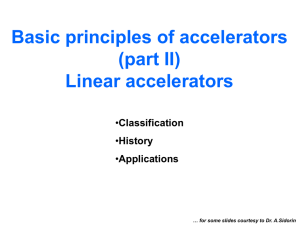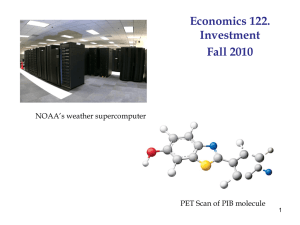welcome and industry overview
advertisement
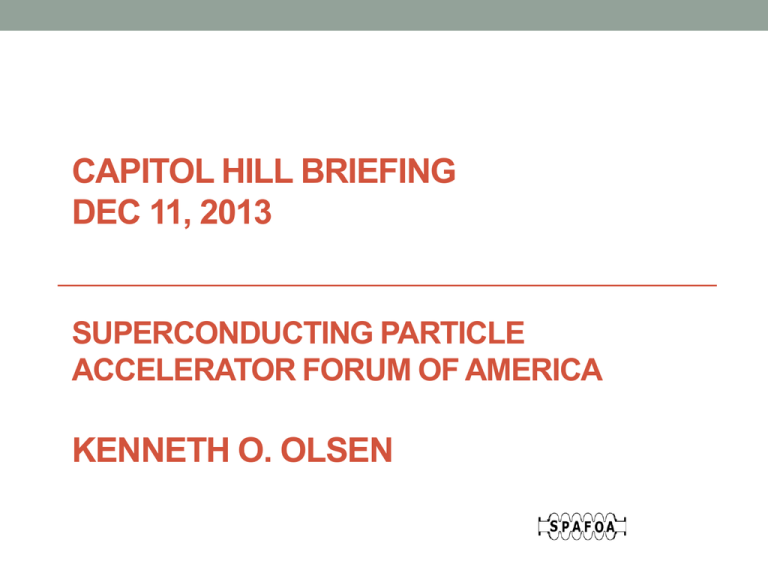
CAPITOL HILL BRIEFING DEC 11, 2013 SUPERCONDUCTING PARTICLE ACCELERATOR FORUM OF AMERICA KENNETH O. OLSEN SPAFOA Mission “The SPAFOA provides a formal network for its industry members with common business interests to interact with government funded accelerator R&D and siting of large accelerator projects” • Tech Transfer: Enhance US industry’s communications with DOE, labs, and universities to incorporate industry in RD&D as a early partner. Enhance US industrial capability in accelerator technology) • Fair Procurement Policies: Promoting Government procurement policies that level the playing field for US suppliers (US jobs with US dollars) • Accelerator Stewardship: Assist DOE Office of Science Accelerator Stewardship Program activities by providing input on R&D needs and applications. Attend workshops and participate in reports as appropriate. • Congressional Liaison: Communicate issues that foster the growth of industrial capability and jobs with the Congress SPAFOA Evolution • Chartered in 2005 as a 501 (c) 6 not for profit DC corporation titled the “Linear Collider Forum of the Americas” (LCFOA) • Reorganized in 2008 to the Superconducting Particle Accelerator Forum of the Americas (SPAFOA) • Renamed in 2012 to the Superconducting Particle Accelerator Forum of America to reflect 100% US industry membership • Current membership totals 25 ~75% small high tech businesses in 14 States • Advocate for the US “Industrialization” in advanced accelerator programs Two Facets of the Accelerator Industry “Low” Energy (Commercial Customers) “High” Energy (Government Customers) • Evolutionary market • 10% annual growth • >10,000 in 1992; >30,000 now • >6,000 in medical applications • Multiple suppliers for major market segments • Each facility different design A few companies are in both facets • Gov’t, university and industry users • SC technology showing dominance • No near term significant commercial market Current Major Accelerator Markets Application Category Global Num Energy Medical Treatment Medicine 11,000 4-250 MeV Ion Implantation Industry 10,200 1-4 MeV Materials Processing Industry 7000 300 KeV E Beam Irradiation Industry 1800 75 KeV-12 MeV Inspection Security and Defense 1500 0.5-9.0 MeV Neutron Generators Industry 1500 2-10 MeV Radioisotope Production Medicine 1000 7-30 MeV Ref: R. Hamm “xxx” Manufacturers literature IAEA Future Accelerator Markets High Energy-SCRF Technology: • Discovery Science: FRIB, LCLS II, ILC • Security: Weapon countermeasures • Environmental: Major waste treatment facilities Key: Strong competitive US industrial base, level international competitive playing field, R&D partnerships with national labs and universities Low Energy- E-Beam Technology: • Food sterilization • Air and water pollution treatment • Industrial processes Key: Lower accelerator costs and increased reliability. Demos to prove regulatory compliance; public acceptance of technology US Industrialization • SCRF Cavities for SNS and CBEAF were purchased from • • • • • Europe Since then US industry has produced X prototypes of ILC cavities DOE, thru Fermilab, has invested over $50M in SCRF R&D and procurements with US industry over the past 10 years US industry now has a least 2 qualified suppliers for all major SCRF accelerator components US industry was excluded from the 560 XFEL cavity procurements , enabling EU industry to invest in significant tooling for future competitions Industrialization provides the foundation for our industry to grow, pay taxes, and train and provide jobs for high tech. manufacturing workers US Industrialization A strong US industrial base for high energy accelerators provides: • Continuous support of DOE SC • Growth into other Government markets (some classified) • Foundation for US participation in ILC However the playing field is tilted against us unless: • DOE limits future accelerator hardware contracts to US industry with an exemption to FAR 6.3 • US Congress enacts legislation limiting competition to US companies and/or • Laboratory procurements require US only competition for strategic reasons such as National security or maintaining capability to partner in international programs such as the ILC Major Stakeholders DOE SC Industry National Labs Congress Other Agencies Briefing Objectives • Update from DOE Office of Science • Progress on accelerator stewardship • Congressional perspectives • Future applications • Industrialization progress and issues

